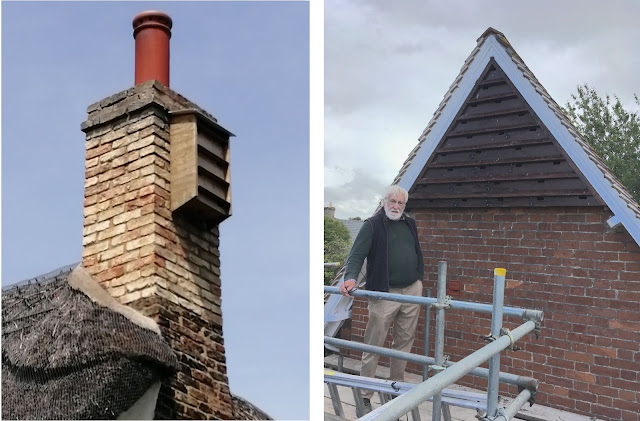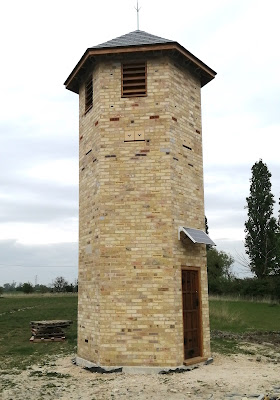Some years ago, I visited a friend, Maurice Wilkinson, who had an array of nestboxes for Swifts and House Martins on his house, with a high occupancy rate. Some of the Swift boxes were made of PVC, the same material that is used for soffits. This inspired the idea for the Model 30, with its PVC roof resulting in John Stimpson upping his production to over 26,000 nestboxes by March 2021Maurice's PVC swift boxes have now had swifts in them for 5 years, and there is no sign of degradation. One might have expected some damage caused by Swift claws on the entrance hole, but they remain unscathed.
Here is a short video of nestling Swifts in one of Maurice's PVC boxes:
PVC as a material is nice to work with, it screws together to make a robust construction, it has good thermal properties, it is lighter than wood, it will never rot, so what not to like? With a suitable primer, it can be painted. It is more expensive than plywood, but not prohibitively so.
We have recently looked at making nest boxes out of 9mm PVC for the complete structure. As a result, we have built 3 prototypes: A Model 30, a Model 31 and a nest box suitable for embedding in external wall insulation (EWI).
Our conclusion is that PVC is a promising material.
PVC Model 30
As the Model 30 is intended for exposed situations, built in PVC, it will be even more resilient, especially from water that may run down the back. This prototype was made by Simon Evans. The body is painted with Sandtex 'Mid Stone'.
 |
PVC Model 30 painted with Sandtex 'Mid Stone'
|
PVC Model 31
The Model 31 is designed to go under broad horizontal eaves. It is intended for well-sheltered locations, so the main advantage of PVC here is its light weight. Here we made a double box:
 |
Computer model
|
 |
PVC Model 31. The small corner pieces attached to the front enable precise relocation of the front after installation
|
PVC EWI box
We were asked for a solution to embed in External Wall Insulation. When EWI is applied, it is between 90mm and 110mm thick with an additional thickness of render on top, but there is not enough depth for a Swift box. There are 2 choices, either penetrate the wall or have the box projecting outside the insulation. We described the former approach here, using a rendered S Brick. As embedding plywood in EWI is probably not a good idea, we developed a solution that does not penetrate the wall, made of PVC:
 |
Section drawing
|
 |
Appearance after installation
|
 |
The PVC used here is coated in 'Anthracite Grey'
|




.jpeg)
.jpeg)
.jpeg)
.jpeg)
.jpeg)









































